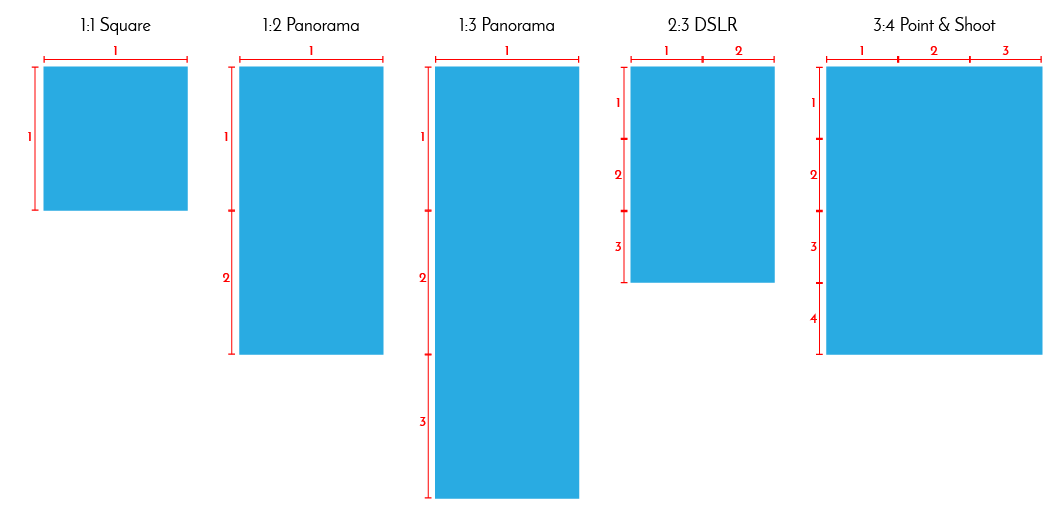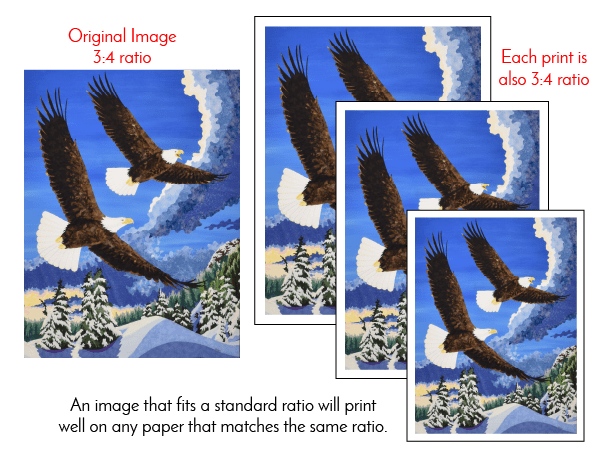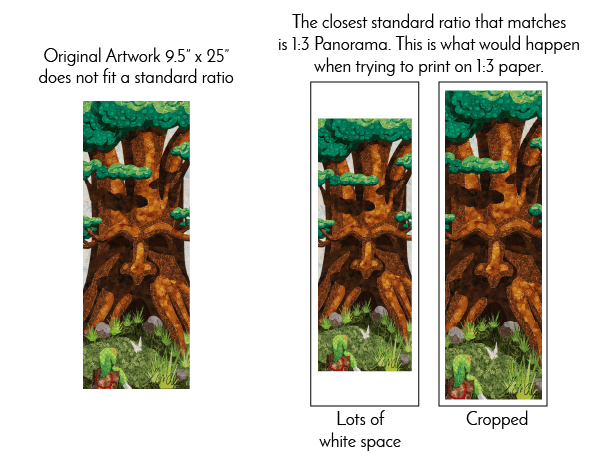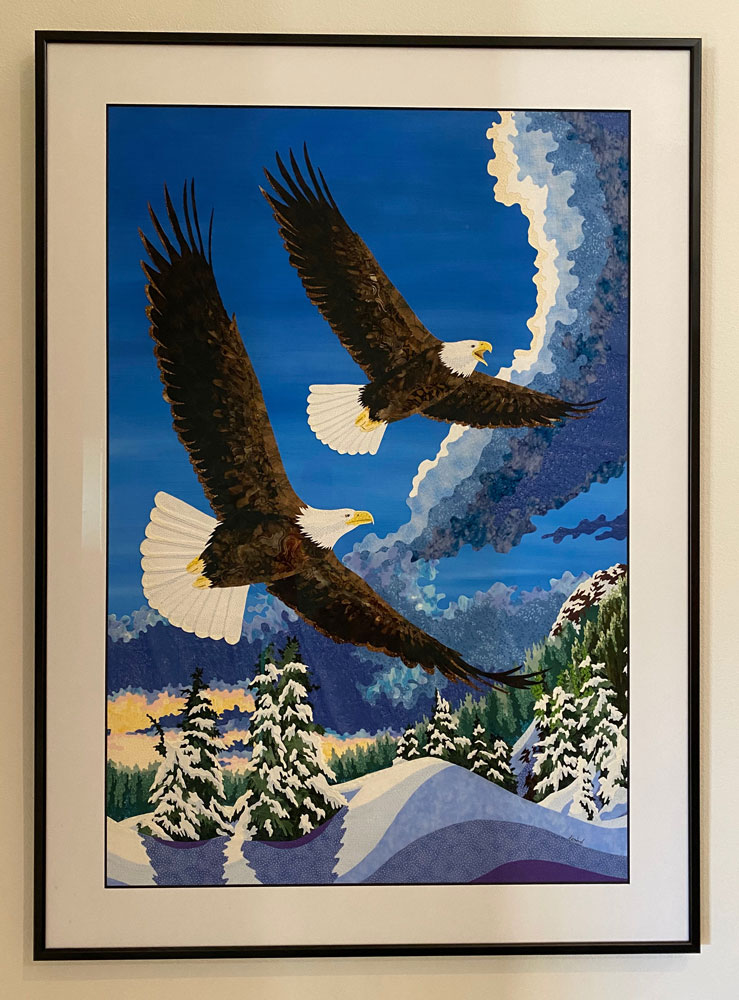Size Matters
- Published:
- Length: 790 words
- Reading Time: 4 minutes
A question came up on one of the social media groups in which I participate. Someone was looking for suggestions on how to pick a size when making a new work of art. Thanks to my fine art background and experiences with e-commerce, I have some strong opinions on the matter. The following post is an expanded version of the answer I originally gave.
Let me start off by providing the ratios and set dimensions I use for my own work. Then I'll explain what factors influence my choice when deciding the size of a new work of art.
Ratios vs Set Dimensions
I almost always use a ratio instead of specific dimensions because ratios are more flexible. These are the ratios I personally use:
- 1:1 Square (ie. 30” x 30”)
- 1:2 Panorama (ie. 24” x 48”)
- 1:3 Panorama (ie. 12” x 36”)
- 2:3 DSLR (ie. 24” x 36”)
- 3:4 Point & Shoot (ie. 30” x 40”)
Here is a visual comparison:

For example, artworks that are 24" x 36" and 13.5" x 9" are both considered 2:3. Similarly, a 16" x 12" and 30" x 40" are both 3:4.
An alternative to the standard ratios above are standardized "art" dimensions:
- 8” x 10”
- 11” x 14”
- 16” x 20”
- 24” x 36”
- 30" x 40"
Note: There are several more standard art sizes than what I've listed here.
Are You Interested in Prints or Reproductions?
The ratios listed above are all standard for printing. If my artwork falls into one of those size ratios, it's very easy to find a printer to make reproductions. (If I have a piece that is not a standard ratio, the artwork will either need to be cropped before printing, or the print will have extra white space on one dimension. Matching a standardized ratio maximizes the amount of printing space that can be used.)
Additionally, I'm not limited to a set dimension. I can make a very large work of art, and as long as it matches a 3:4 ratio (for example), it can be easily scaled to print on any 3:4 size sheet of paper.

Link Meets the Deku Tree is 9.5" x 25" and does not fit a standard size ratio. If I were to want a print of this quilt, the artwork would not line up correctly on the paper. It would either need to be cropped to fill up the space, or there would be unprinted paper around the artwork.

Is your artwork framed?
Something else to consider when determining your next artwork's size is: Will the finished work of art be framed or unframed? This question is important because it can dramatically change the amount a buyer will need to invest before hanging a new artwork.
The "art" dimensions listed at the beginning of this post are standard sizes for artwork. As a result, frames that match those dimensions are less expensive (since they're mass-produced) and more readily available. You can walk into any frame store and find off-the-shelf frames that work with those dimensions.
However, keep in mind that framing prices go up very quickly the larger an artwork is. It cost around $500 to frame my Bald Eagles picture, which is 30" x 40". A good chunk of that cost was simply because while the artwork is 30" x 40", there is a 3" mat that goes around the entire image (making the frame dimensions 36" x 46"). 40" or greater requires an oversized mat, which are more expensive. I also needed a 36" x 46" sheet of acrylic (instead of glass), which added to the cost. (Acrylic is more expensive than glass, but it's far lighter and safer than glass, and absolutely the best option for large images.)

Note: If your art needs a mat, keep in mind the standard art dimensions I listed at the beginning of this post are for inside the frame. That means a mat will eat into the available image area, ultimately changing the size required for your artwork.
Kestrel's Advice
The long story short is for most artists, standardized ratios are the best guideline to use when choosing a new artwork's size. They give the flexibility to use any dimensions you want while still working within a standard format.
If your artwork does need to be framed, consider using a standard art sizes. Frames for art that fit those dimensions are generally less expensive and easier to find.
